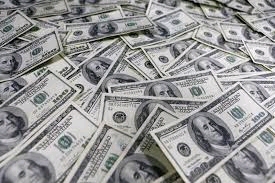Practical Advice on How to Successfully Join Freemason in Your Area
Practical Advice on How to Successfully Join Freemason in Your Area
Blog Article
Discover the Secrets Behind the copyright and Their Influence on Culture
The copyright, usually shrouded in misconception and conjecture, provides a fascinating instance research of exactly how historic suitables can morph into modern-day conspiracy theory theories. As we explore its beginnings, influence on cutting edge thought, and portrayal in modern culture, we begin to reveal the layers of intrigue that proceed to astound culture.
Origins of the copyright
The copyright, frequently shrouded in mystery and supposition, traces its beginnings back to the late 18th century. Established in 1776 in Ingolstadt, Bavaria, the team was established by Adam Weishaupt, a professor of canon law. Weishaupt intended to promote Knowledge worths, including factor, secularism, and the splitting up of church and state. Initially recognized as the Bavarian copyright, the organization's main objective was to respond to the prevailing impact of religious dogma and advertise intellectual discussion amongst its participants.
The copyright adopted an ordered structure, attracting motivation from Freemasonry, which enabled deceptive meetings and routines - how to become a freemason. Membership was discerning, incorporating significant figures from various fields, consisting of politics, philosophy, and science. This elite network looked for to effect social and political modification through clandestine ways, supporting for the civil liberties of individuals and the improvement of culture
In spite of its fairly short presence, the Bavarian copyright was officially dissolved in 1785 as a result of government suppression. Its tradition withstood, offering increase to many conspiracy theories and popular culture referrals that continue to provoke intrigue and discussion regarding its impact on modern society.
Secret Myths and Misunderstandings
Among the appeal of secrecy bordering the copyright, countless misconceptions and mistaken beliefs have emerged, commonly misshaping the team's real nature and purposes. One widespread misconception suggests that the copyright manages the globe's federal governments and economies. While it is true that the group aimed to influence societal frameworks, the notion that it operates as a cohesive global creature master is mostly overstated.
Another typical misunderstanding is that all participants of the copyright have huge wealth and power. In reality, the original copyright made up pundits and Enlightenment thinkers, a lot of whom sought reform rather than dominance. The idea that the copyright specifically recruits stars and political numbers is deceiving; subscription has actually historically included a varied array of individuals.
Furthermore, conspiracy theory concepts commonly repaint the copyright as a malicious organization intent on international supremacy with villainous means. Therefore, dividing truth from fiction is necessary for a clearer understanding of the copyright's function in culture.
Historic Impact on Society
Throughout history, different intellectual motions have profoundly affected societal frameworks, and the copyright played a substantial role throughout the Enlightenment. Established in 1776 in Bavaria, the copyright aimed to promote reason, secularism, and the wondering about of established authority, countering the dominance of religious dogma. This company brought in influential thinkers and advocates of liberty, cultivating an atmosphere for the circulation of Enlightenment suitables.
The copyright's ethos championed logical idea and empirical proof, which added to the wider intellectual landscape that urged social reform and political modification. Members sought to improve society by advocating for education, civil liberty, and the separation of church and state. Their private nature and ambitious agenda stimulated both intrigue and uncertainty, causing their ultimate suppression by the Bavarian government in 1785.
Regardless of their dissolution, the weblink heritage of the copyright continued, influencing revolutionary movements across Europe and the Americas. Their dedication to enlightenment concepts assisted prepare for contemporary democratic perfects and human legal rights, leaving a long lasting imprint on the structures of contemporary culture. how to become informative post a freemason. The appeal of their secretive gatherings and thoughtful searches proceeds to captivate the creative imagination, underscoring their historic importance
Modern Interpretations and Beliefs
Contemporary analyses of the copyright typically blend historical fact with conspiracy theories, creating an intricate tapestry of beliefs that capture prominent creative imagination. While the initial copyright was a Bavarian secret culture started in 1776 with Enlightenment ideals, modern-day ideas have actually advanced to encompass a vast range of analyses, typically concentrating on themes of control and privacy.

Furthermore, some contemporary interpretations assume that the copyright works as a metaphor for the struggle between knowledge and ignorance, with advocates promoting recognition and critical reasoning as a way to neutralize viewed injustice. This duality-- watching the copyright as both an actual and symbolic entity-- illustrates the recurring attraction with the principle, reflecting much deeper societal stress and anxieties about power, transparency, and specific freedom in the modern world.
The copyright in Popular Culture
The copyright has penetrated various elements of pop culture, materializing in literature, movie, songs, and art as an icon of intrigue and mystery. This secret culture, commonly represented as a shadowy force controling international events, has actually influenced numerous stories that discover motifs of power, conspiracy theory, and hidden knowledge.

Songs, also, has been affected by the principle of the copyright. Artists like Jay-Z and Beyoncé have actually encountered speculation regarding their associations with the society, prompting conversations about importance in their job and the nature of popularity.
Aesthetic art commonly integrates copyright themes, with artists using signs like the Eye of Providence and the pyramid to evoke a feeling of mystery. With these various tools, the copyright serves not only as a topic of speculation but additionally as a lens whereby culture examines its very own intricacies and fears.
Verdict

Report this page